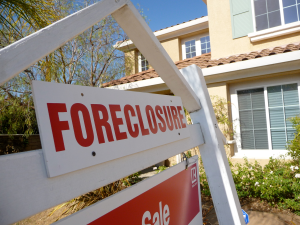
By Avis Thomas Lester, Urban News Service
Willie Ann Lytle faced foreclosure on her home two days before Halloween. So she filed for bankruptcy to save it.
Lytle’s parents bought the cheerful house on Addison Road in Capitol Heights, Maryland, for $10,500 in 1948. She was only 1. Her mother, Margaret, taught her to cook in the same kitchen where she now prepares her own meals. Lytle and her brother, William Jr., played in the same room where she now watches Scandal. She tends the yard with the same care that her father, William, once did. And after her parents and brother each took ill with cancer, she nursed them, and later mourned their deaths there.
So, when creditors foreclosed in 2009, she resisted by filing for Chapter 7 bankruptcy protection to erase some of her debts. When the house was scheduled for public auction, she filed for Chapter 13 on Oct. 27. She hoped to arrange a debt repayment plan and keep her home.
“My whole life is in this house,” said Lytle, 68, a retired teacher’s aide. “I am not going to let anybody take it from me.”
Foreclosures reached crisis proportions among blacks years before devastating the general population starting in 2007. About 8 percent of African-American and Hispanic homeowners lost their residences to foreclosure from 2005 to 2008, compared with 4.5 percent of whites, according to the Center for Responsible Lending in Washington, D.C.
“Blacks started losing homes from about 2004. So we saw a wealth loss even before the recession,” said Algernon Austin, a senior research fellow at Global Policy Solutions in D.C. “Gains in home ownership that blacks had made since the 1960s have been lost.”
This widespread decline in equity has eroded black wealth even further, Austin said. The median net worth for African-American households in 2007 was $19,200, according to a December 2014 Pew Research Center report. That number dropped 43 percent to $11,000 in 2013. White households fell from about $192,500 in 2007 to $141,900, a drop of 26 percent. Hispanic households slid from $23,600 in 2007 to $13,700 in 2013, 42 percent less. Pew generated these statistics after analyzing the Federal Reserve’s Survey of Consumer Finances.
Charles R. Lowery Jr., director of Fair Lending and Inclusion for the NAACP, said the home ownership rate for African-Americans has hovered near 40 percent for many years, while the rate for whites exceeds 70 percent. He said programs that helped many whites realize the American dream of home ownership decades ago, such as the GI Bill, often excluded blacks. Many black first-time buyers also lacked the money to cover down payments and closing costs. Also, blacks rarely inherited homes – an avenue to wealth that many whites walked for generations.
The Center for Responsible Lending estimates that 2.5 million homes fell to foreclosure from 2007 through 2009, the first three years of the crisis and the period when the most losses occurred. Most of these mortgages had originated between 2005 and 2008.
George Mason University law professor Todd Zywicki believes that federal policy played a role in the foreclosure crisis.
“Federal policy, starting with the FHA and then spreading to Fannie Mae and Freddie Mac, promoted home ownership by new borrowers…by weakening home loan standards,” he said. “…Nothing-down mortgages combined with low interest rates prompted a lot of people to buy homes and to essentially treat them as investments that later went sour.”
Lytle said she was making her payments until her loan was sold. She had initiated four loans over the years for home repairs. Each time, her monthly payments increased, and her loan repayment period was extended. She said she applied for a loan modification to reduce the payments from $1,695 to $1,315. Then she retired, her income fell, and problems started. Eventually the lender began foreclosure proceedings.
“For many of the black home buyers who got caught up in the foreclosure crisis, there was a lack of understanding about the process, how it works,” said Bob Ross, president of the NAACP chapter in Prince George’s County, a wealthy, majority-black jurisdiction that was the epicenter of Maryland’s housing crisis. “Remember, we are only 50 years from the Civil Rights movement. We’ve only been homeowners for a short period of time.”
Lytle said she has nothing beyond the walls that surround her.
“For many people, the only wealth they have is tied up in their homes. If they take those away, you have nothing,” Lytle said.





Hi Avis, great article on foreclosure crisis that have ensnared communities of color at an alarming rate. But there is a new foe that have targeted communities of color, in particular senior citizens, reverse mortgages a legal tool that is ravaging communities like a plague. I will send you my website and email, what is taking place in Illinois, but it’s a much bigger story nationally. My name is Rev. Robin Hood and I am the Executive Director of Illinois Anti-Foreclosure Coalition (312)998-0478.